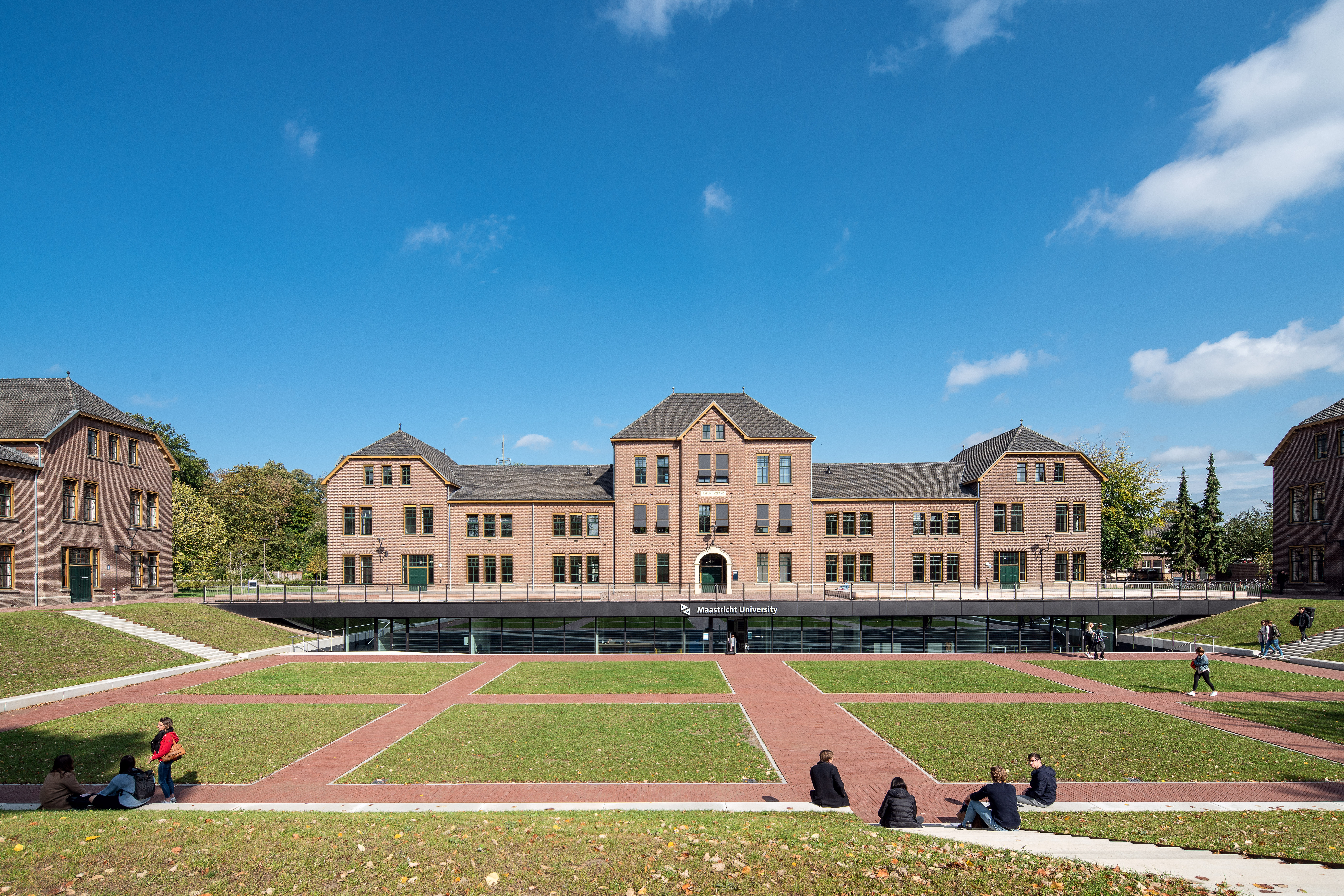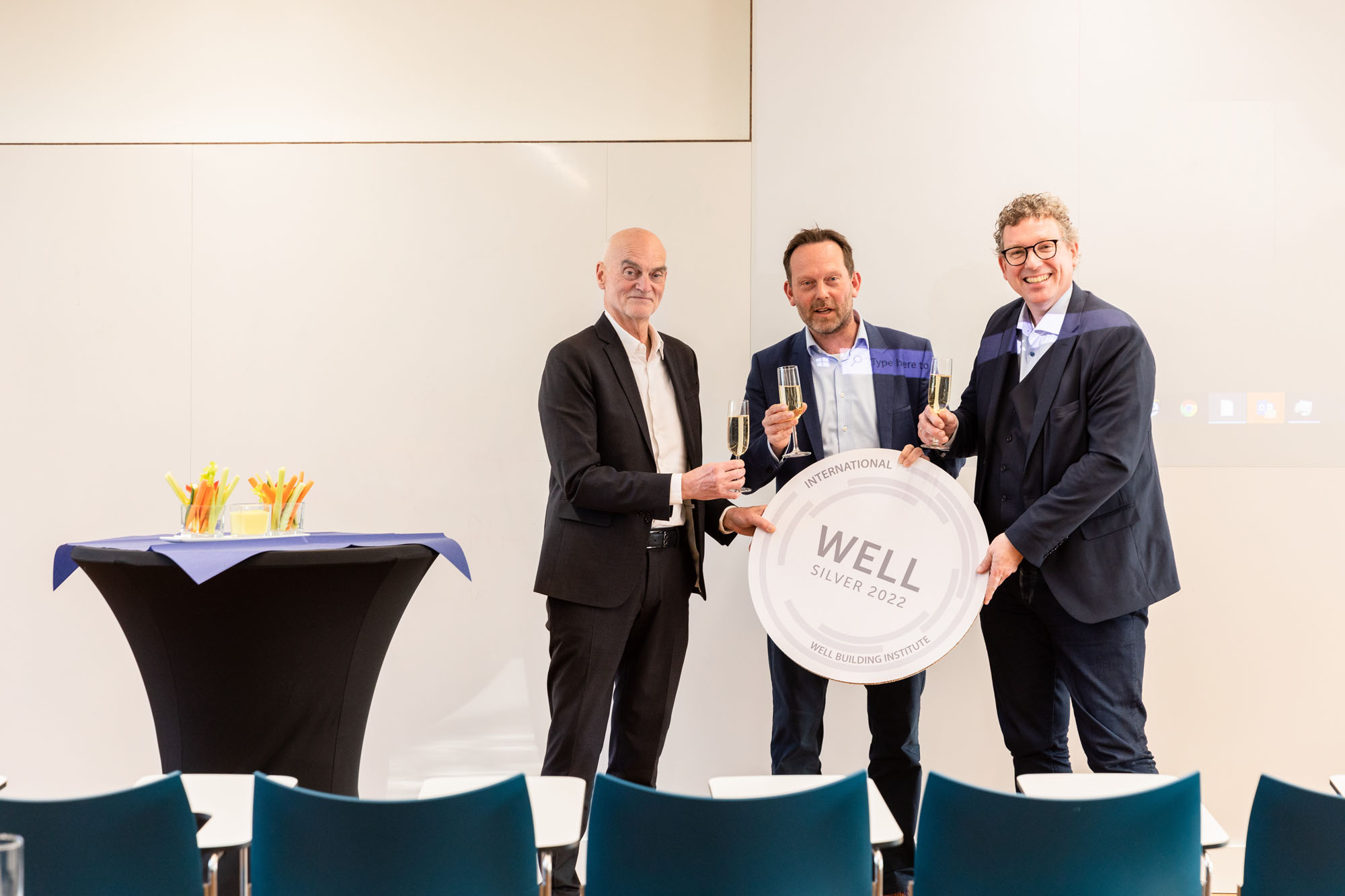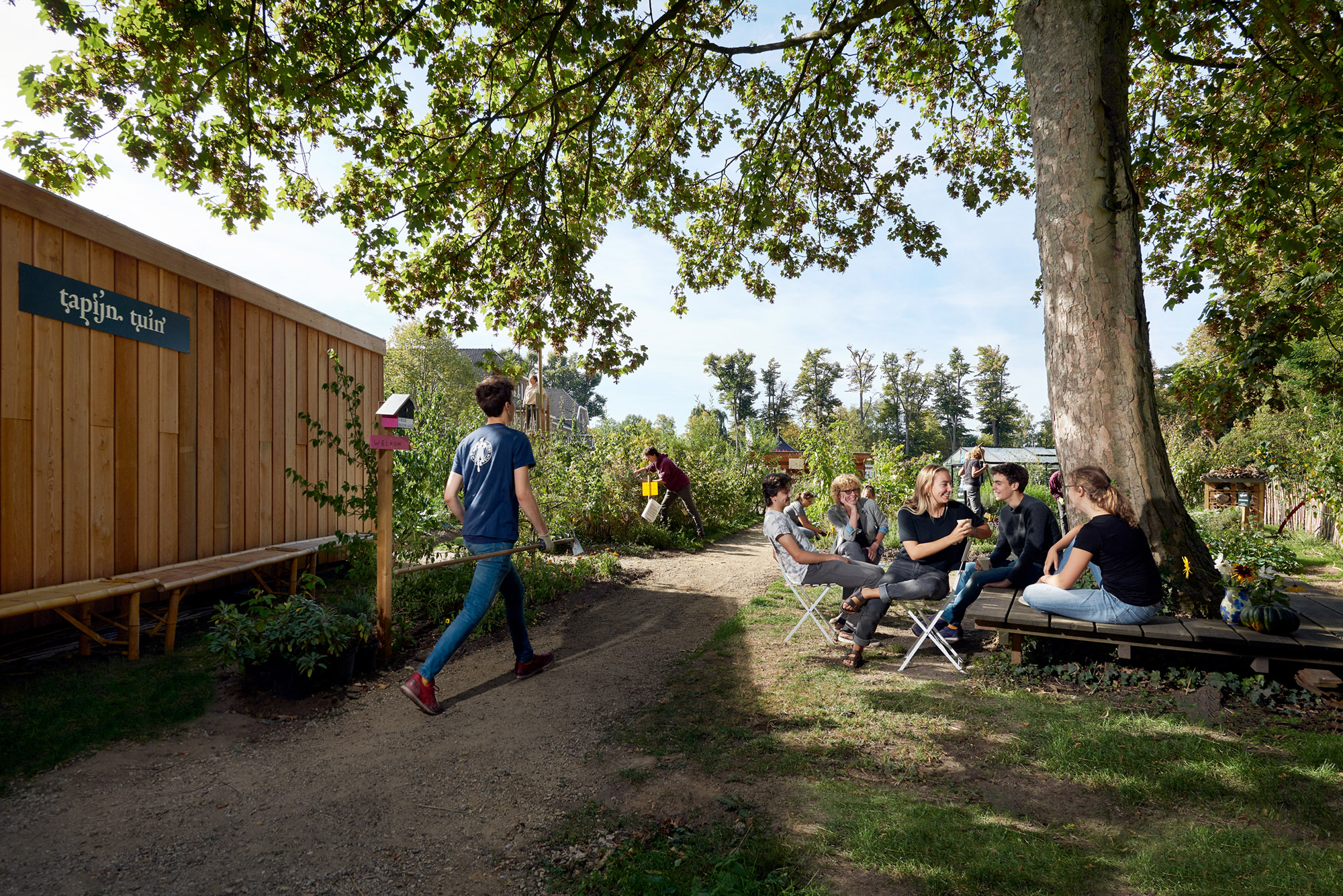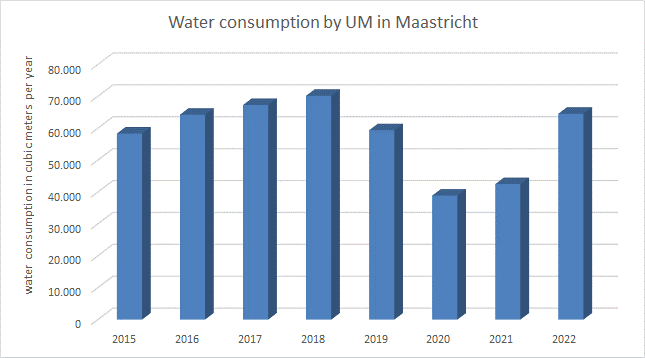Real estate, campus & biodiversity
UM owns and manages a large number of buildings with teaching and research areas, offices and other support functions. The real estate portfolio comprises approximately 50 buildings and almost 300,000 m2. The real estate and campus are constantly evolving to meet the changing needs of the university.
Sustainability is of paramount importance in real estate development. In the forthcoming years UM will focus on:
- Further reducing the carbon footprint
- Well-being and health
- Circularity

Tapijn

At Tapijn you can clearly see the results of the sustainability efforts at UM. In 2013, Maastricht University, the Province of Limburg and the municipality of Maastricht purchased the former Tapijn army barracks from the central government. Since then, the area has been redeveloped into a public city park and a university campus. During the renovation and new construction of Tapijn (phase 1) the sustainability standards BREEAM and WELL-Building have been applied. This resulted in a BREEAM certificate of Excellence and a Silver WELL-Building certificate. (Read the following webpage for more information on how the WELL-Building standard has been applied to Tapijn.) The certified buildings have been in use since 2020. In the next coming years, UM will evaluate the experiences and lessons from this project and continue to work on a complete sustainable real estate portfolio.

During the real estate development of the barracks, the monumental buildings at Tapijn have been retained and found a new purpose for education and research. Where possible, we reused building materials, such as pavement. During renovation, we invested intensively in insulation with the result that the buildings are heated, almost completely, with air source heat pumps. UM also invested in realising the solar park Belvédère, so the complete site can function energy neutral.
Besides real estate development at Tapijn, UM also takes care of the landscape and biodiversity around the buildings. Citizen initiatives like Natuurgluren and the Tapijntuin increase the quality of the city park and the well-being of students and staff at UM.
Towards low-carbon real estate
During the past years, UM invested intensively in reducing the CO2 emissions of its real estate. Not only during the development of Tapijn, but also for the other buildings sustainable measures have been taken, such as LED lights, heat recovery and heat pumps. In regards to the Dutch climate agreement, UM is working closely with Universiteiten van Nederland to realize the transition to a climate neutral campus. Especially UM is faced with a challenge, because of its large number of monumental buildings. Turning the monumental buildings into sustainable real estate asks for a comprehensive approach to avoid humidity problems and to keep the monumental value intact.
Moreover, the transition to gas free heating systems is also challenging for Maastricht, because possible alternatives, like soil energy, are limited. Therefore, UM, the municipality of Maastricht and Enpuls have invested in a feasibility research to accomplish a high temperature heat network in the inner city, nourished with industrial residue heat.
UM reserved 27,2 million euro for sustainability measures in real estate for the period 2023 to 2030. Read more information about the energy use at UM on the webpage ‘Climate and Energy’.
Nature inclusive campus: study and work in a healthy environment
In 2020, UM started the development and application of the concept ‘nature inclusive campus’. The underlying thought is that a larger biodiversity also contributes to the wellbeing of staff and students. Green surroundings not only offer relaxation and inspiration, but also help with heat stress during the summer and water storage during wet periods. Furthermore, UM owns a number of valuable inner areas and century old ramparts. The UM grounds offers therewith also sanctuary for special species, such as the pale corydalis.

During the activation programme Green Impact in 2020, students and staff were asked to introduce project proposals for a more attractive campus. Two Green Impact project proposals resulted for the areas Grote Gracht 90-92 (inner city) and the Universiteitssingel 40 (Randwyck). Based on these proposals, an implementation plan was set up and budget approved. The realisation started in 2021 and will be completed in 2022. In the Grote Gracht the pavement is transformed into a garden. Here, we chose for a circular design (download in pdf) in which we reuse different materials (sand and tiles) and use native plantation to create a habitat for birds and other small fauna.
At the Universiteitsingel 40 a plantation of trees, hedges and flower borders will create a green environment where students and staff can work and relax. During realisation, the student initiative UM strolls developed a walking route with a special seating area. The route is about 5 km long and passes all buildings of the Heath Campus at Randwyck. The walking route also has a social sofa that is integrated into the landscape of Universiteitsingel 40.
Furthermore, the university complex at Randwyck is in cooperation with Centrum voor Natuur- en Milieueducatie (CNME) for the realisation of bee hotspots, i.e. a mound of three soil types for wild bees nesting in the ground. The soil is sown with plant species important to bees, such as snakeweed. By 2023, 64 species of wild bees have been identified, including the early sand bee.

In 2021, UM commissioned ecological firm Landmark to design, construct and manage a temporary soil depot at the Tapijn Barracks. These mounds have been transformed into an ecological and recreational landscape with wildflowers. On these Tapijn Chills, students and visitors to the city park can relax and enjoy the biodiversity. Meanwhile, a five-star insect hotel has also been realised on the hills by the CNME (link). The seating in the landscape comes from the Work Building.
Water consumption
In UM’s buildings, tap water is mainly used as drinking water, for research in different labs, restrooms and for cleaning. UM has taken steps to restrict the use of tap water for low-end applications. In most toilets, water saving taps have been installed. In the buildings at Universiteitssingel 40 and 60, water storage facilities are in place to use rainwater for flushing toilets and in fire hoses. UM does not use tap water for watering landscapes around it's buildings. The graph shows the water use at UM in the past years. Due to the corona crisis, there was a sharp dip in water consumption in 2020 and 2021.
